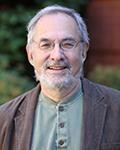25 Years of the Superfund Research Program: Highlights and Hopes
1:00 pm US Eastern Time
Slides & Resources
Speaker Presentation Slides
Dr. William Suk presentation slides (PDF)
Additional Resources
NIEHS Superfund Research Program
Boston University Superfund Research Program
Boston University Superfund Research Program May newsletter
NIH Superfund Basic Research briefs listserv: sign up to receive informative monthly briefs
New Study Links One in Five Deaths in Bangladesh to Arsenic in the Drinking Water
Additional calls in this series featuring the BU Superfund Research Program
(MP3 recordings are available for all calls):
January 8, 2015: The State of the Water: Linking Ocean Health to Human Health
October 9, 2014: Home Invaders: Are Flame Retardants Fattening Us Up and Harming Our Bones?
September 9, 2014: PCBs in Schools - Still a Problem?
June 10, 2014: Catch of the Day: Healthy Fish, Healthy Humans
April 24, 2014: Healthy Urban Gardens: Your Soil Health and You
February 25, 2014: Chemical Trespassers in Your Indoor Air
October 24, 2013: Environmental Justice and the Superfund Research Program: Community Collaborations Making a Difference
May 23, 2013: 25 Years of the Superfund Research Program: Highlights and Hopes
CHE presents the second in a series of calls featuring the Superfund Research Program
From Love Canal in New York to the Palos Verde Shelf in California, more than 1,300 locations have been federally designated as Superfund sites since the program’s inception in 1980. Many people are unaware that in addition to cleaning up hazardous waste, the Superfund program also includes a critical research component investigating health effects of toxic substances found at these sites, as well as translating this research for affected communities and others. In 2012, the NIEHS Superfund Research Program celebrated its 25th anniversary of research to protect human health and the environment.
This call included an overview of the program’s history, highlighting some of the accomplishments of scientists, trainees and research translation efforts.
Dr. Bill Suk has served as director of the Superfund Research Program (SRP) since its inception as the Superfund Hazardous Substances Basic Research and Training Program at NIEHS. He described the overall structure of Superfund Research Centers, primary goals of the program and key changes in the program over time. He was followed by Dr. Joseph Graziano, director of the Columbia University SRP established in 2000. Dr. Graziano discussed his research on arsenic in drinking water in Bangladesh, findings associating exposures with deficits in child intelligence, and implications for policy. Dr. Jennifer Schlezinger discussed her experience as a trainee of the Boston University SRP who worked in the laboratory of two BU SRP investigators before becoming a principaliInvestigator of her own BU SRP study focused on receptor mediated toxicity and chemical mixtures.
This call was moderated by Elise Miller, executive director of CHE, with special guest discussion leader Dr. David Ozonoff, director of the Boston University Superfund Research Program.
Featured Speakers
 Dr. William Suk, PhD, MPH, has served as director of the Superfund Hazardous Substances Basic Research and Training Program (Superfund Research Program) since its inception. He is also director of the Center for Risk & Integrated Sciences (CRIS) at NIEHS. His affiliation with a number of organizations and committees include Roundtable on Environmental Health Sciences, Research, and Medicine, Institute of Medicine, National Academy of Sciences; International Advisory Board of the Chulabhorn Research Institute, Bangkok, Thailand; and World Health Organization Consultation on Scientific Principles and Methodologies for Assessing Health Risks in Children Associated with Chemical Exposures. He sits on a member of a number of trans-NIH committees.
Dr. William Suk, PhD, MPH, has served as director of the Superfund Hazardous Substances Basic Research and Training Program (Superfund Research Program) since its inception. He is also director of the Center for Risk & Integrated Sciences (CRIS) at NIEHS. His affiliation with a number of organizations and committees include Roundtable on Environmental Health Sciences, Research, and Medicine, Institute of Medicine, National Academy of Sciences; International Advisory Board of the Chulabhorn Research Institute, Bangkok, Thailand; and World Health Organization Consultation on Scientific Principles and Methodologies for Assessing Health Risks in Children Associated with Chemical Exposures. He sits on a member of a number of trans-NIH committees.
 Dr. Joseph Graziano, PhD, professor of Environmental Health Sciences and Pharmacology; associate dean for Research, The Mailman School of Public Health at Columbia University; director, The Columbia University Superfund Basic Research Program. Dr. Graziano has been a faculty member at the College of Physicians & Surgeons of Columbia University since 1979, and was chair of the Department of Environmental Health Sciences at the Mailman School of Public Health from 1991-2002, when he became associate dean for research. Prior to that, he served on the faculties of The Rockefeller University and Cornell University Medical College. In 2000, Dr. Graziano became the founding director of the Columbia University Superfund Basic Research Program (SBRP), entitled Health Effects and Geochemistry of Arsenic and Lead. The Columbia SBRP involves faculty from four schools of Columbia University and includes geochemistry, hydrology and remediation research at four US Superfund sites, as well as studies of arsenic metabolism and toxicity in families exposed to naturally occurring high concentrations of arsenic in drinking water in Bangladesh. His most recent research has discovered that both arsenic and manganese exposures are associated with cognitive deficits in children. His lab has also contributed to the recent findings from Bangladesh that folic acid facilitates arsenic methylation and elimination, leading to a decline in blood arsenic concentration.
Dr. Joseph Graziano, PhD, professor of Environmental Health Sciences and Pharmacology; associate dean for Research, The Mailman School of Public Health at Columbia University; director, The Columbia University Superfund Basic Research Program. Dr. Graziano has been a faculty member at the College of Physicians & Surgeons of Columbia University since 1979, and was chair of the Department of Environmental Health Sciences at the Mailman School of Public Health from 1991-2002, when he became associate dean for research. Prior to that, he served on the faculties of The Rockefeller University and Cornell University Medical College. In 2000, Dr. Graziano became the founding director of the Columbia University Superfund Basic Research Program (SBRP), entitled Health Effects and Geochemistry of Arsenic and Lead. The Columbia SBRP involves faculty from four schools of Columbia University and includes geochemistry, hydrology and remediation research at four US Superfund sites, as well as studies of arsenic metabolism and toxicity in families exposed to naturally occurring high concentrations of arsenic in drinking water in Bangladesh. His most recent research has discovered that both arsenic and manganese exposures are associated with cognitive deficits in children. His lab has also contributed to the recent findings from Bangladesh that folic acid facilitates arsenic methylation and elimination, leading to a decline in blood arsenic concentration.
 Jennifer Schlezinger, PhD, received her Bachelor of Science from Boston College in 1992 and her doctorate from the Massachusetts Institute of Technology and Woods Hole Oceanographic Institution Joint Program in Biological Oceanography in 1998. Dr. Schlezinger began her interaction with the Superfund Research Program during her doctoral studies. As a graduate student in the laboratory of Dr. John Stegeman (a PI in the BUSRP), she studied the molecular mechanisms of PCB toxicity in a marine fish model. Her training under the Superfund Research Program umbrella continued at Boston University School of Public Health (BUSPH), where she completed her post-doctoral training in the field of immunotoxicology, in the laboratory of Dr. David Sherr (a PI in the BU SRP). These SRP training opportunities culminated in Dr. Schlezinger establishing her own laboratory at BUSPH and becoming a PI herself in the BUSRP.
Jennifer Schlezinger, PhD, received her Bachelor of Science from Boston College in 1992 and her doctorate from the Massachusetts Institute of Technology and Woods Hole Oceanographic Institution Joint Program in Biological Oceanography in 1998. Dr. Schlezinger began her interaction with the Superfund Research Program during her doctoral studies. As a graduate student in the laboratory of Dr. John Stegeman (a PI in the BUSRP), she studied the molecular mechanisms of PCB toxicity in a marine fish model. Her training under the Superfund Research Program umbrella continued at Boston University School of Public Health (BUSPH), where she completed her post-doctoral training in the field of immunotoxicology, in the laboratory of Dr. David Sherr (a PI in the BU SRP). These SRP training opportunities culminated in Dr. Schlezinger establishing her own laboratory at BUSPH and becoming a PI herself in the BUSRP.
 Dr. David Ozonoff moved to Boston University in 1977 as the first chair of the Department of Environmental Health in the new School of Public Health, a position he held until 2003. His research centers on community health effects of toxic exposures, especially from hazardous waste sites; new mathematical approaches to understanding the results of small case-control studies; and the use of scientific evidence in court. Dr. Ozonoff has been principal or co-investigator of several major studies of waste sites and is director of the Superfund Basic Research Program—a multidisciplinary effort funded by the National Institute of Environmental Health Sciences to understand basic scientific problems connected with the federal Superfund Program. He works with The Center for Discrete Mathematics and Theoretical Computer Science at Rutgers University on a Special Focus effort to bring together mathematicians and epidemiologists. Dr. Ozonoff is co-editor-in-chief of the online journal Environmental Health.
Dr. David Ozonoff moved to Boston University in 1977 as the first chair of the Department of Environmental Health in the new School of Public Health, a position he held until 2003. His research centers on community health effects of toxic exposures, especially from hazardous waste sites; new mathematical approaches to understanding the results of small case-control studies; and the use of scientific evidence in court. Dr. Ozonoff has been principal or co-investigator of several major studies of waste sites and is director of the Superfund Basic Research Program—a multidisciplinary effort funded by the National Institute of Environmental Health Sciences to understand basic scientific problems connected with the federal Superfund Program. He works with The Center for Discrete Mathematics and Theoretical Computer Science at Rutgers University on a Special Focus effort to bring together mathematicians and epidemiologists. Dr. Ozonoff is co-editor-in-chief of the online journal Environmental Health.


